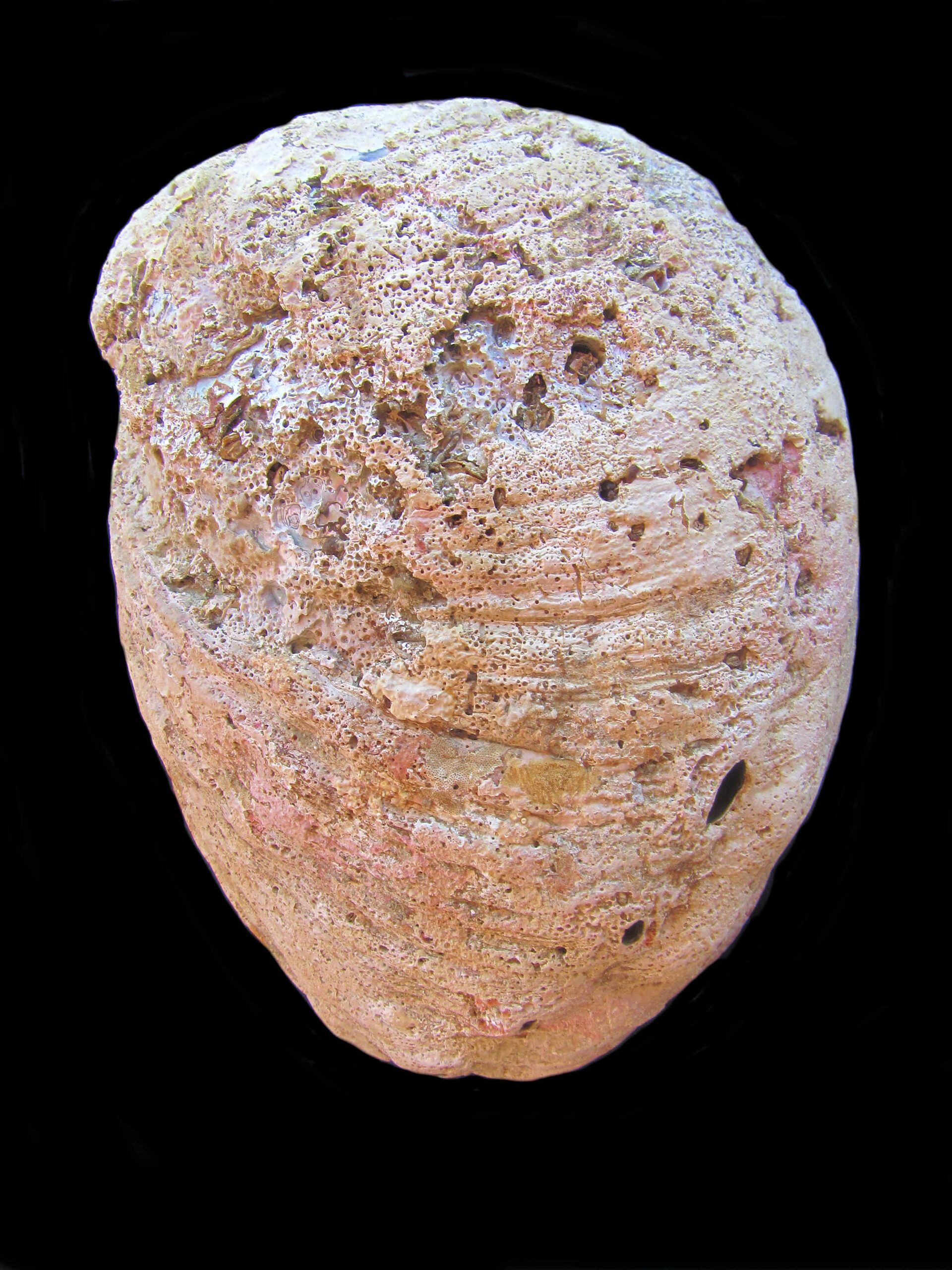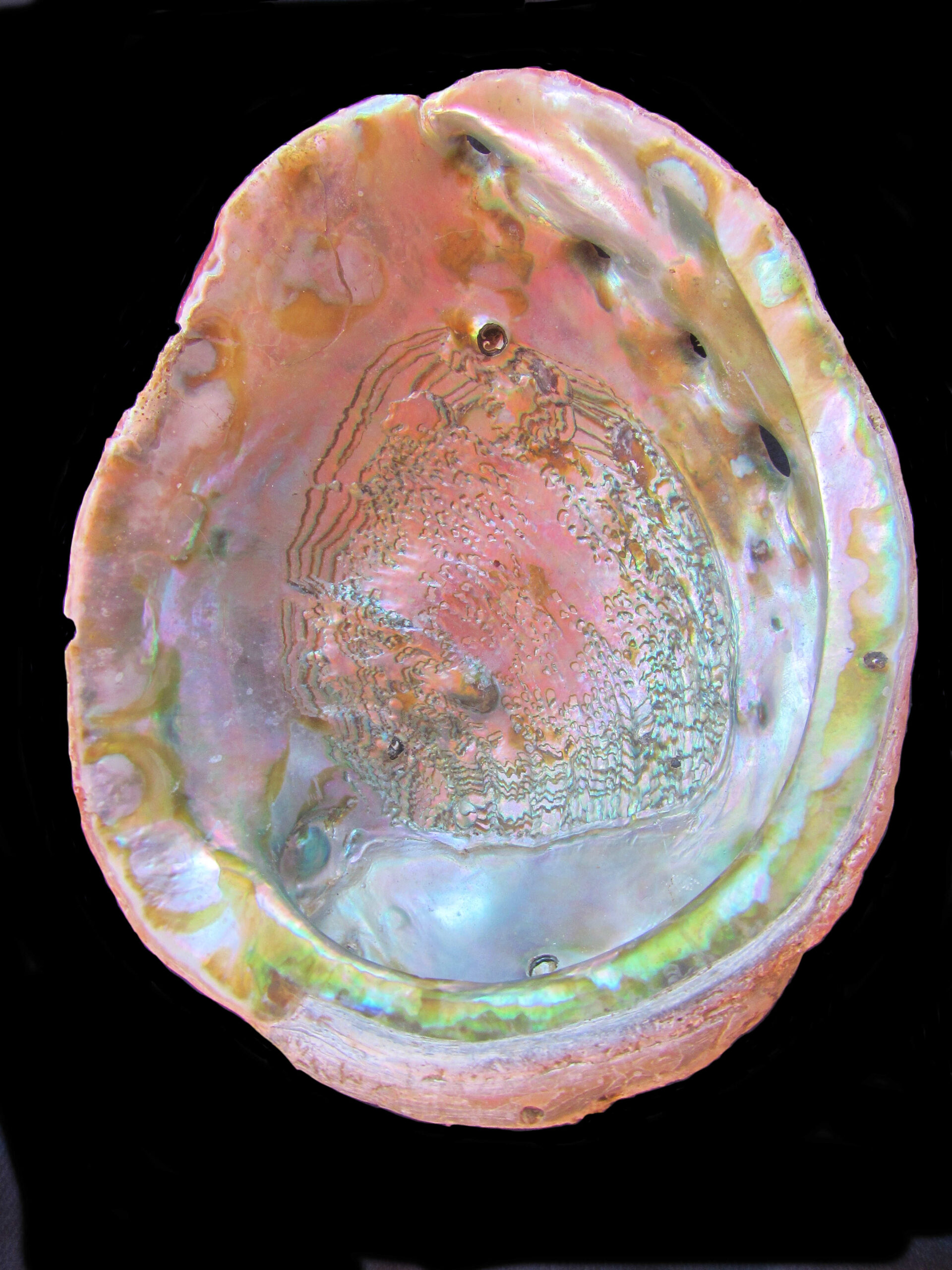Red Abalone Shell, Haliotis rufescens

 Red Abalone Shell, Haliotis rufescens. Shell collected from coastal waters off San Diego, California, June 2009. Size: 26 cm (10.2 inches) x 21 cm (8.3 inches). Collection, photograph and identification courtesy of Bob Hillis, Ivins, Utah.
Red Abalone Shell, Haliotis rufescens. Shell collected from coastal waters off San Diego, California, June 2009. Size: 26 cm (10.2 inches) x 21 cm (8.3 inches). Collection, photograph and identification courtesy of Bob Hillis, Ivins, Utah.
The Red Abalone, Haliotis rufescens (Swainson, 1822), is a gastropod mollusk that is a member of the Haliotidae Family of Abalones. They are known in Mexico as abulo’n coorado. They are the largest Abalone in the world. The shell has an oval profile and are somewhat flattened with four open holes or three holes and a notch. The shell is marked by fine spiral ridges and radiating waves. The exterior of the shell is a dull brick-red in color that, on occasion, can extend onto the lip of the shell, opposite the line of holes. The interior of the shell is an iridescent mix of blue, green, silver, pink, and brown with pink being the dominant color. The epipodium is black with white fringe and black tentacles. Red Abalone reach a maximum of 31.3 cm (12.3 inches) in length and 25.3 cm (10.0 inches) in height.
Red Abalone are found on rocks and in crevasses from just beyond the low water mark to depths up to 165 m (540 feet). They range from Oregon to Bahia Tortugas, Baja California Sur; they are absent from the Sea of Cortez. Red Abalone are known to hybridize, and with a wider variety of species, than other Abalone.
Synonyms include Haliotis californiana, Haliotis hattorii, and Haliotis ponderosa.